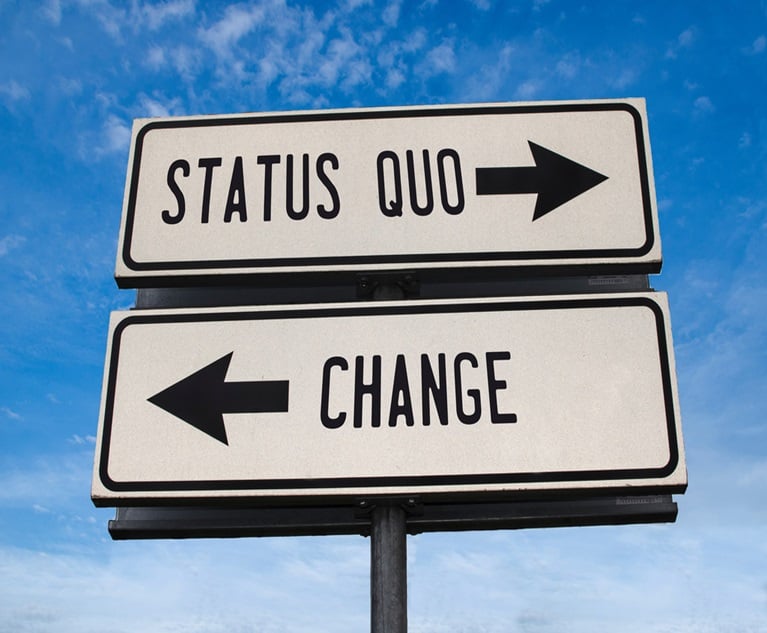 Wondering what's hot in the world of insurancebad faith? To find out, I attended the Defense Research Institute(DRI) conference titled Bad-Faith and Extra Contractual Liabilityin June at the Waterfront Westin in Boston, Mass. Along with about300 participants, I heard from a panel of excellent speakers answerthis opening question.
Wondering what's hot in the world of insurancebad faith? To find out, I attended the Defense Research Institute(DRI) conference titled Bad-Faith and Extra Contractual Liabilityin June at the Waterfront Westin in Boston, Mass. Along with about300 participants, I heard from a panel of excellent speakers answerthis opening question.
The event is valuable to claims professionals, although theattendance was heavily weighted toward defense attorneys andin-house counsel for p&c insurers. To avoid the perils ofinformation overload, I have confined the list of takeaways forclaims professionals to ten bits of wisdom, in no particular orderof importance.
|1. Beware of those bad faith quagmires.
|The toughest states for insurance bad faith are Florida,California and Washington State. Adjusters must mind their p's andq's in any state, but lawyers view this triad as the most exactingfrom a pro-plaintiff/policyholder standpoint. While the sayinggoes, “Don't mess withTexas,” this can apply to multiple states. Besure to do your research.
|2. Roll the dice more.
|Houston lawyer Christopher W. Martin, a founding partner atMartin, Disier Jefferson, & Wisdom, gave a rivetingpresentation about winning bad faith cases, during which heimplored insurers to take more of these cases to trial. Martinargues that too often insurance carriers are unduly cautious andafraid.
|3. Trade secrets in claims manuals? Really?
|In many bad faith cases, plaintiffs often seek production ofinsurer claims manuals. They hope these are fertile grounds forbolstering a bad faith claim. One example is “Our mission in claimsis to preserve the company's financial health and settle for thelowest possible amount.”
|Insurers typically balk at this use of claims manuals, objectingthat the claims manual contains trade secrets. If you use thisargument, though, prepare your claims staff to be able to explainwhat secret and proprietary information is actually included insuch documents.
||4. Avoid “game-day” deposition prep foradjusters.
|Too often, defense attorneys defending bad faith cases scheduleprep time with the adjuster the morning of the deposition. This isnot a best practice. Prepping the adjuster for his or herdeposition is not something to leave for the morning of the event.Adjusters are tense and distracted the morning of their deposition.They cannot absorb all the information and advice when defensecounsel does a “data dump.” Better practice is for the adjuster tomeet with counsel days or even a week ahead of the deposition.
|5. Small but expanding storm clouds.
|A growing minority of courts are finding bad faith even in theabsence of coverage. Some courts have held that, even if an insurerprevails in proving no coverage, it can still be sued when itsclaim-handling was deemed unreasonable beyond good faith mistakes.Still, even in those jurisdictions recognizing bad faith in theabsence of coverage, the putative insured must still provedamages.
|6. Do eroding policies equate to eroding goodfaith?
|Defense-within-limits policies pose interesting (and volatile)bad faith potential. Should those policy dollars be spent more onsettlement than defense? Do these policies entitle policyholders toa greater say in selecting their defense counsel? Does theinsurance company have a heightened liability exposure formismanaging legal fees if they deplete the policy limits? Thiscould be a burgeoning subset of bad faith in the future. (Refer tothe sidebar on the top right for more information about thesepolicies.)
|7. No easy wins for policyholder attorneys.
|Despite fears of runaway verdicts or bad-faith lawsuits againstinsurance companies, these are not easy cases plaintiffs to win.Don't just take the word of the defense bar, either.
|“Even good bad faith cases are relatively rare and hardto win,” explains David W. White, a founding member at Breakstone,White & Gluck, who typically represents policyholders. “Even ifthe plaintiff wins, two-thirds [of those decisions] are reversed onappeal.” This observation dovetails with Martin's thoughts in item2.
|8. Watch the “ear test” as a barometer of insurer badfaith.
|Plaintiff attorneys read body language of the claims adjustersand executives during the deposition. They infer signs from thebody language of key insurer personnel. Opposing lawyers read suchbody language as poker players read the tells of others sittingaround the card table. It lets them gauge whether or not they havea promising bad faith claim.
|According to White, the odds of a punitive award “correlatedirectly with the redness of the claim manager's ears duringdeposition.” Therefore, the takeaway for adjusters and claimsexecutives is this: Manage your emotions during testimony. Expectto be hit and hit hard, as in tackle football.
||9. You win or lose a bad faith case long beforetrial.
|As in other matters, preparation pays off.“Most bad faith cases are usually won or lost longbefore trial starts,” says Rick Hammond, a Chicago-based equityshareholder at Johnson & Bell. “Problem areas areinvestigations that identify information adverse to the insured'sinterests as 'good news' in the claims file.”
|Another adjuster pitfall, he adds, is choosing to believesomeone other than the insured. Hammonds also cites adjusters whohang dirty laundry in the claims file, such as a supervisorcommenting about adjuster performance in the claims file. He hasalso seen claims file entries to the effect that, “the line unitreally screwed up this claim” or “it looks like we are in bad faithbecause of the long delay.” These are essentially the badfaith equivalents of dynamite sticks.
|10. Looking at Facebook And Bad Faith
|Social media use in claims handling is becoming a new wrinkle inbad faith cases according to Paul Berne, senior vice president ofclaims at Lancer Insurance Company. While claims people may beexcited about social media tools, Bernecautions that jurors mayview an insurance company's use of social media in claims as aninvasion of privacy. This might extend to sending a friend requestas a pretext to access information that jurors feel should beprivate.
|As a final thought, if you want to guarantee that attorneys willstay until the bitter end of a conference, hold the ethicspresentation until the very last session. Many attorneys must havea certain minimum number of hours of annual ethics continuingeducation (CE) credits. Periodic ethics training could arguably beone safeguard against, well, bad faith.
|Do Self-Eroding Policies Heighten Bad FaithRisks?
|William Kobokovich, vice president and associate group generalcounsel at Travelers, and the Hon. Enrique Romero, a retired LosAngeles County Superior Court judge and a mediator with ADRservices, commented on perils of defense-within-limits liabilityinsurance policies. Four observations that impact adjustercase-handling are:
- Communicate with the insured. There may be aduty to keep the insured informed of the defense costsincurred.
- Watch the meter. Avoid unreasonable defensecosts that deplete the coverage at an accelerated rate.
- Explore settlement early. Such policies mayput a heavier onus on adjusters to explore early settlement inorder to avoid ballooning defense costs.
- Brace yourself for demands for Cumis counsel.Some argue that such policy features create an inherent conflictbetween insureds and insurers, which creates a right of independentcounsel for the policyholder.
Want to continue reading?
Become a Free PropertyCasualty360 Digital Reader
Your access to unlimited PropertyCasualty360 content isn’t changing.
Once you are an ALM digital member, you’ll receive:
- All PropertyCasualty360.com news coverage, best practices, and in-depth analysis.
- Educational webcasts, resources from industry leaders, and informative newsletters.
- Other award-winning websites including BenefitsPRO.com and ThinkAdvisor.com.
Already have an account? Sign In
© 2024 ALM Global, LLC, All Rights Reserved. Request academic re-use from www.copyright.com. All other uses, submit a request to [email protected]. For more information visit Asset & Logo Licensing.








